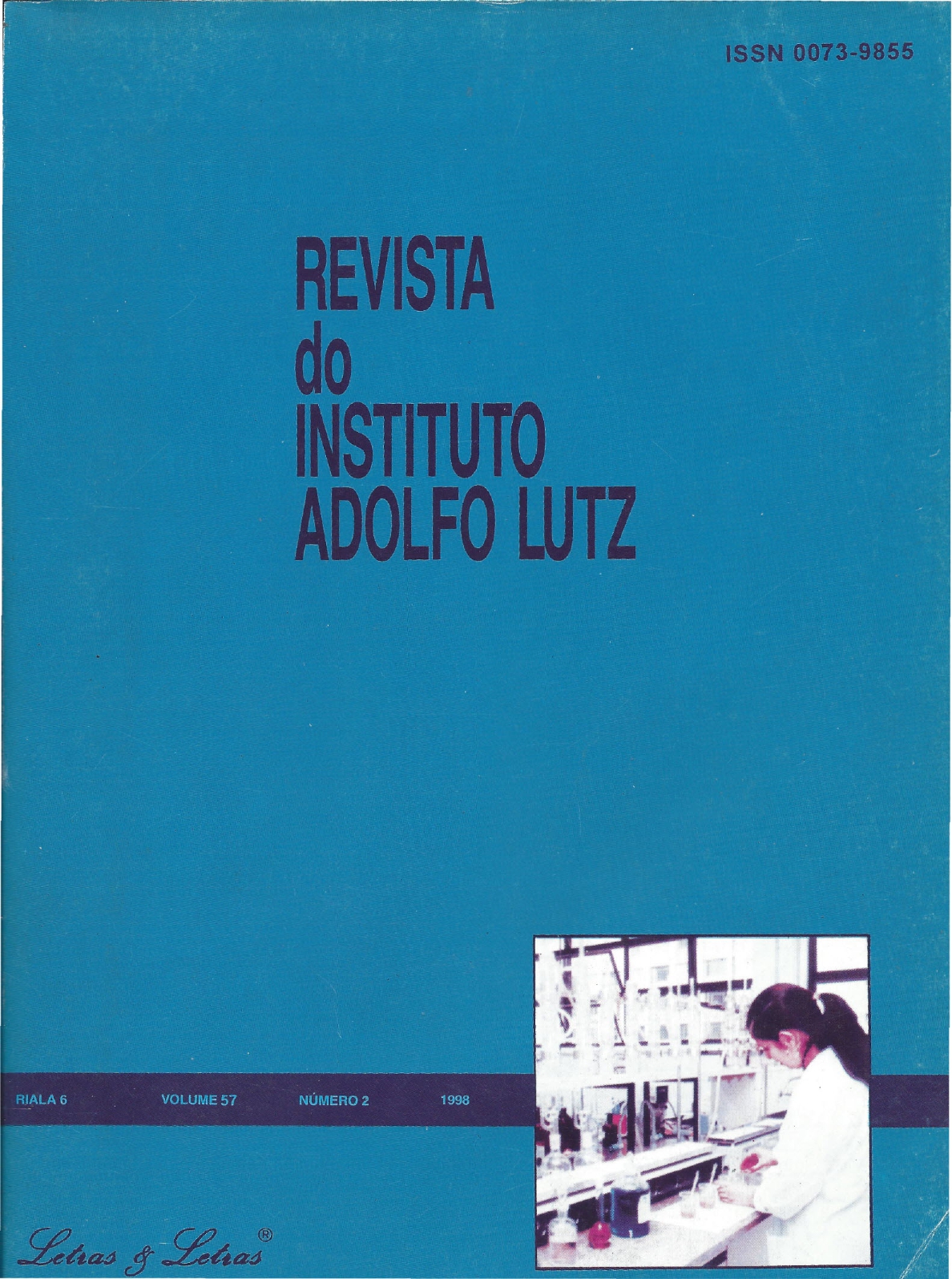Resumo
O óleo de palma, conhecido no Brasil como azeite de "dendê" é o óleo extraidopolpa do fruto da palmeira Elaeis guineensis Jacq, sendo uma fonte muito rica de pró-vitamina A, especialmente B-caroteno. Nesse estudo comparou-se a biopotência do azeite de dendê como fonte de próvitamína A em relação ao B-caroteno sintético, avaliando-se também o efeito do processamento térmico sobre a biodisponibilidade da vitamina A em ratos. Foram utilizados três grupos de seis animais, previamente deficientes em vitamina A. Os animais receberam, por 20 dias, dietas contendo óleo de soja enriquecido com B-caroteno sintético, azeite de dendê sem aquecimento ou então azeite de dendê submetido ao aquecimento de 100°C por 20 minutos.Todas as dietas continham teoricamente 4 ER/grama
de dieta. A concentração hepática de vitamina A foi semelhante nos grupos controle e naquele que recebeu azeite de dendê sem aquecimento prévio (185,72 ± 25,40 e 150,17 ± 33,08 ug/g de tecido, respectivamente). O grupo no qual o azeite de dendê sofreu processamento térmico mostrou um valor menor de vitamina Ahepática em relação ao controle (144,80 ± 16,84 e 185,72 ± 25,40 ug/g de tecido, respectivamente). Os resultados demonstram a viabilidade do azeite de dendê como fonte pró-vitamínicamesmo sob processamento térmico, visto que os animais do grupo que receberam azeite de dendê previamente aquecido armazenaram quantidades significativas de vitamina A hepática.
Referências
2. DESAI, I.D.; TAVARES, M.L.G.; DUTRA DE OLIVEIRA, B.S.; DUARTE, R.M.; DUTRA DE OLIVEIRA I.E .. Food habits and nutritional status of
agricultural migrant workers of Southern Brazil. Am. J. Clin. Nutr.,33: 702-714, 1980.
3. DESAI, I.D.; BHAGAVAN, H.; SALKEDLD, R.; DUTRA DE OLIVEIRA I.E .. Vitamin E content of crude and refined vegetable oils in Southern Brazil. J Food Comp, Anal., 1: 231-238,1988.
4. DUTRA DE OLIVEIRA, J.E.; DESAI, I.D., FÁVARO, R.M.D.; FERREIRA, I.F Effect of Heat treatment during cooking on the biological value of vitamin A fortified sybean oil in humano Internat. 1. Food Sei Nutr., 45:203-207,1994.
5. FÁVARO, R.M.D.; FERREIRA, 1.F.; DESAI, I.D.; DUTRA DE OLIVEIRA, I.E. Studies on fortification of refined soybean oil with all-trans retynil pal-
mitate in Brazil: stability during cooking and storage. J Food Comp Anal.,4: 237-244, 1991.
6. FÁVARO, R.M.D.; MIYASAKA, C.R.; DESAI, I.D.; DUTRA DE OLIVEIRA, I.E. Evaluation of the effect of heat treatment on the biological value of vitamin A fortified soybean oiI. Nutr. Res.,12: 13571363, 1992.
7. HATHCOCK, I.N. ET AL. Eva1uation of vitamin A toxicity. Am. J. Clin. Nutr. 52: 183-202, 1990.
8. HEYWOOD, R. PALMER A.K.; GREGSON R.L.; HUMMLER H. The toxicity of beta-carotene. Toxicology, 36: 91-100, 1985.
9. MATHEWS-ROTH, M.M. Plasma Concentrations of carotenoids after large doses of B-carotene. Am. J Clin. Nutr., 52: 500-501, 1990.
10. MAY, c.v Palm oil carotenoids. Food Nutr. Bull., 15(2): 130-137, 1994.
11. MUJIBUR RAHMAN, M.; WAHED, M.A.; AKBAR ALI, M. B-carotene losses during different methods of cooking green leafy vegetables in Bangladesh. J. Food Comp Anal., 3: 47-53, 1990.
12. OLSON, 1.A. A simple dual assay for vitamin A and carotenoids in human liver, Nutr. Rep. Intern., 19: 807-811, 1979.
13. RODRIGUEZ-AMAYA, D. Assessment of provitamin A content of foods - The Brazilian experience. In: Two decades of progress: Linking knowledge to action. Report of the XVI International Vitamin A Consultative Group Meeting, Thailand. 1994.
14. RUKIMINI, e. Red Palm oil to combat vitamin A deficiency in developing countries. Food Nutr. Bull.,15 (2): 126-129,1994.
15. TRIGUEIRO, I.N.S. & PENTEADO, M.V.e. Mudanças nos teores de alfa e beta caroteno em óleo de dendê durante o armazenamento a temperatura ambiente (26°C). B. CEPPA. ,11 (1): 1-10, 1993.
16. UNDERWOOD, B.; MCCLATCHEY, S. Global prevalence of vitamin A deficiency and its controI. In: Abstracts of the XVI International Vitamin A Consultative Group Meeting, Chiang Rai, Thailand. IVACG Secretariat, Washington, DC, 1994.
17. YADAV, S.K. & SEHGAL, S. Effect ofhome processing on ascorbic acid and B-carotene contend of spinach (Spinacia oleracia) and amaranth (Amaranthus tricolor) leaves. Plant Foods Hum. Nutr., 47: 125-131, 1995.

Este trabalho está licenciado sob uma licença Creative Commons Attribution 4.0 International License.
Copyright (c) 1998 Márcia Varella Morandi, Rosa Maria Duarte Fávaro, Alceu Afonso Jordão Jr., Helio Vannucchi, José Eduardo Dutra de Oiveira
